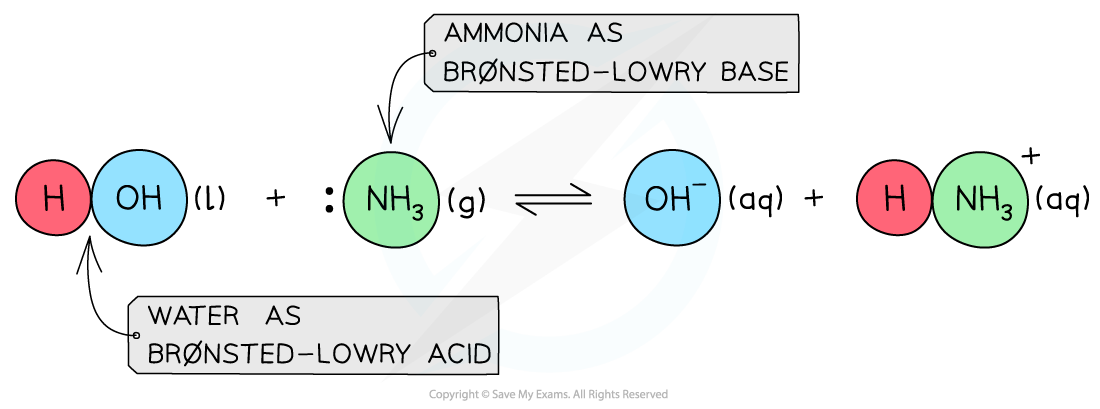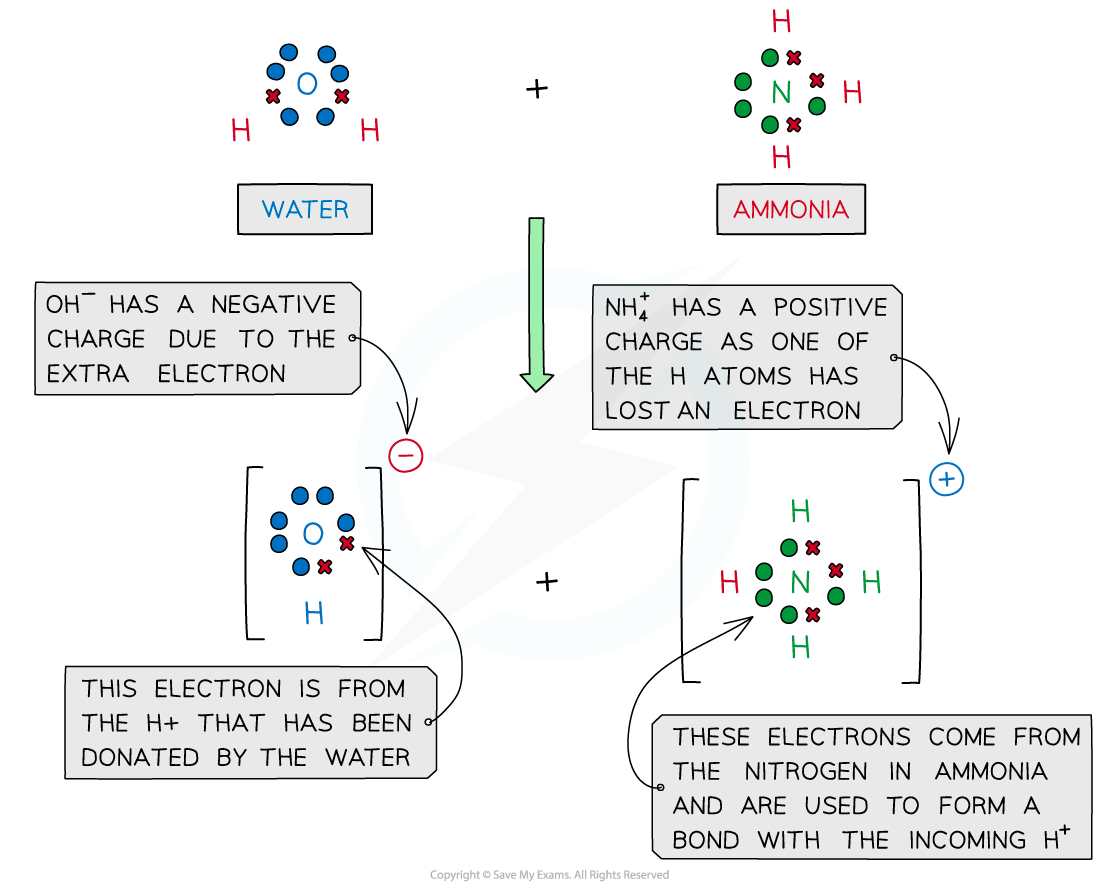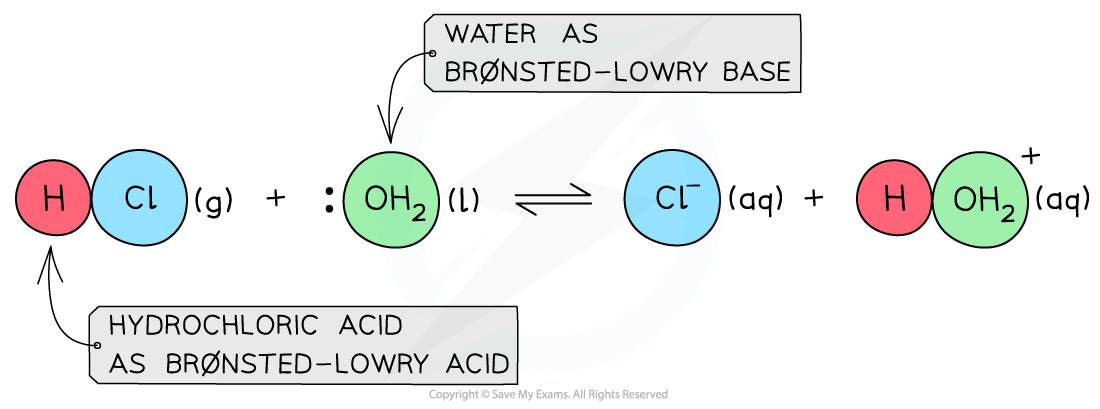Conjugate Acid-Base Pairs
- A Brønsted-Lowry acid is a species that can donate a proton
- A Brønsted-Lowry base is a species that can accept a proton
- In a reaction equilibrium the products are formed at the same rate as the reactants are used
CH3COOH (aq) + H2O (l) ⇌ CH3COO- (aq) + H3O+ (aq)
acid base conjugate base conjugate acid
- The reactant CH3COOH is linked to the product CH3COO- by the transfer of a proton from the acid to the base
- Similarly, the H2O molecule is linked to H3O+ ion by the transfer of a proton
- These pairs are therefore called conjugate acid-base pairs
- A conjugate acid-base pair is two species that are different from each other by a H+ ion
- Conjugate here means related
- In other words, the acid and base are related to each other by one proton difference
Amphiprotic Species
- Species that can act both as proton donors and acceptors are called amphiprotic
- Eg. water as a Brønsted-Lowry acid

The diagram shows water acting as a Brønsted-Lowry acid by donating a proton to ammonia which accepts the proton using its lone pair of electrons

The Lewis diagram for the reaction of water with ammonia to show how water acts as a Brønsted-Lowry acid and ammonia as a Brønsted-Lowry base
- Eg. water as a Brønsted-Lowry base

The diagram shows water acting as a Brønsted-Lowry base by accepting a proton from hydrochloric acid proton using its lone pair of electrons

The Lewis diagram for the reaction of water with hydrochloric acid to show how water acts as a Brønsted-Lowry base and ammonia as a Brønsted-Lowry acid
What is the difference between amphiprotic and amphoteric?
- A compound that is amphoteric means it has both basic and acidic character
- When the compound reacts with an acid, it shows that it has basic character
- When it reacts with a base, it shows that it's acidic
- An example of this is aluminum oxide which reacts with both hydrochloric acid and sodium hydroxide:
Al2O3 (s) + 6HCl (aq) → 2AlCl3 (aq) + 3H2O (l)
Al2O3 (s) + 2NaOH (aq) + 3H2O (l) → 2NaAl(OH)4 (aq)
- When a compound is amphiprotic, it means it can act as a proton donor and as a proton acceptor
- Aluminium oxide is not amphiprotic, even though it is amphoteric
Amphiprotic versus Amphoteric Table

Worked Example
In the equilibrium reaction shown below, which species are a conjugate acid-base pair?CH3CH2CH2COOH (aq) + H2O (l) ⇌ CH3CH2CH2COO- (aq) + H3O+ (aq)
A. CH3CH2CH2COOH and H2O
B. H2O and H3O+
C. H2O and CH3CH2CH2COO-
D. CH3CH2CH2COO- and H3O+
Answer
The correct option in B
- A conjugate acid-base pair differ only by an H+ ion
